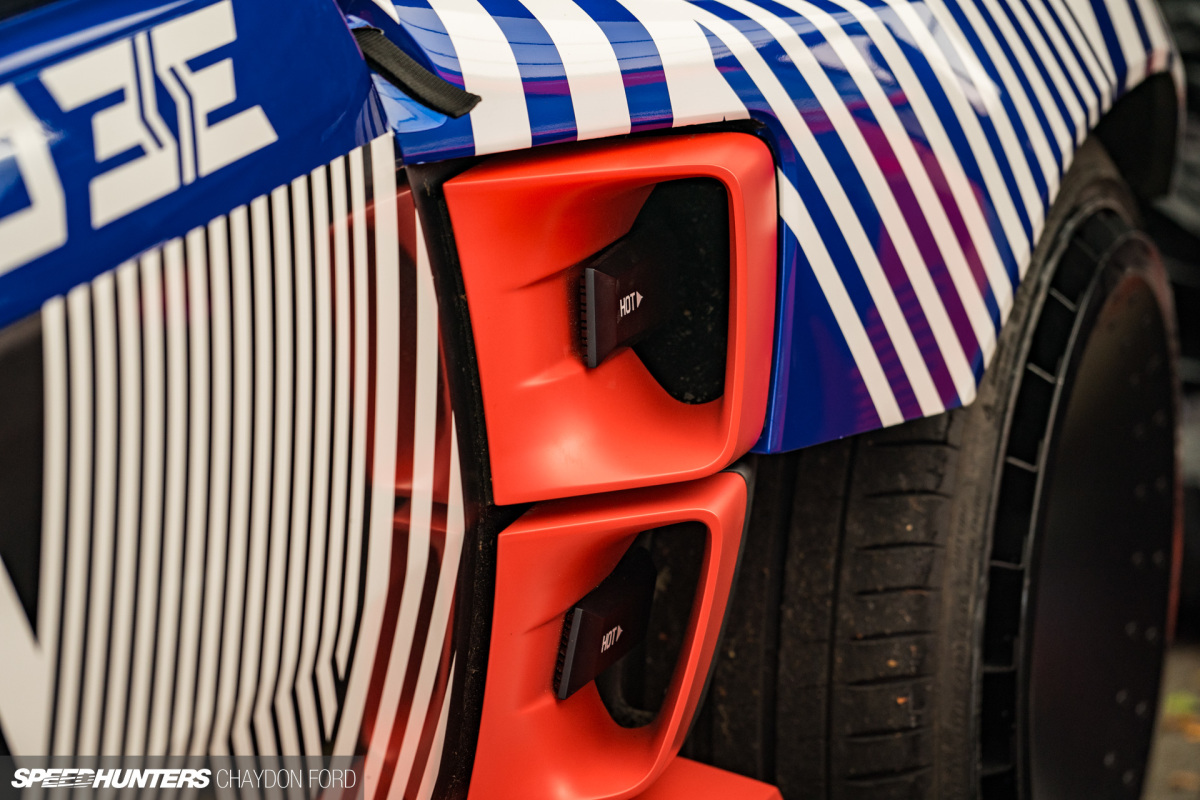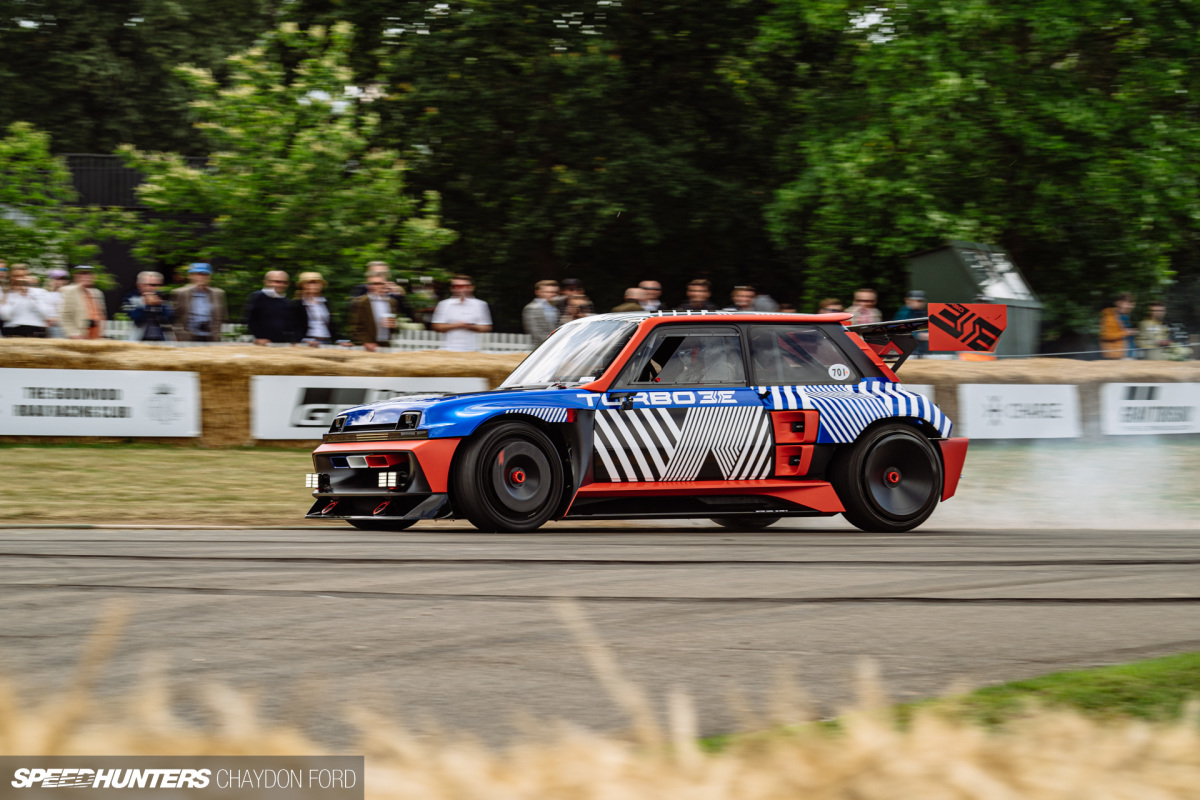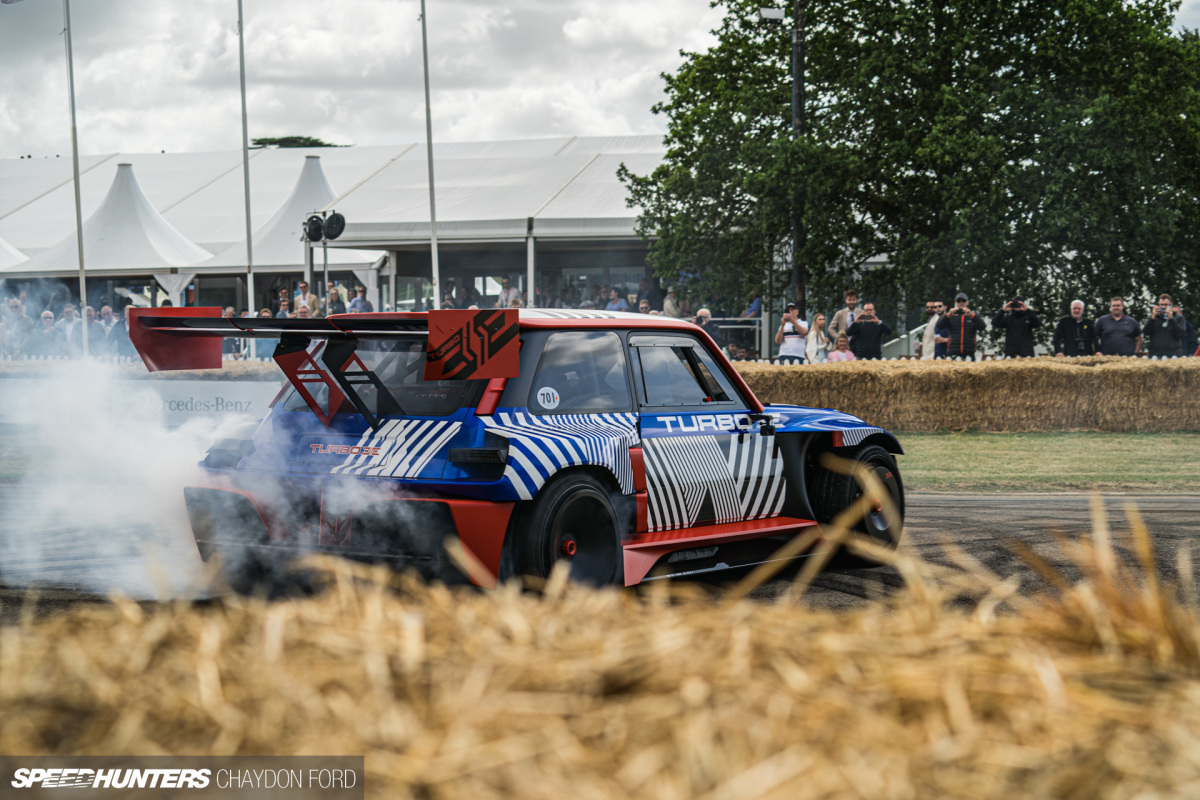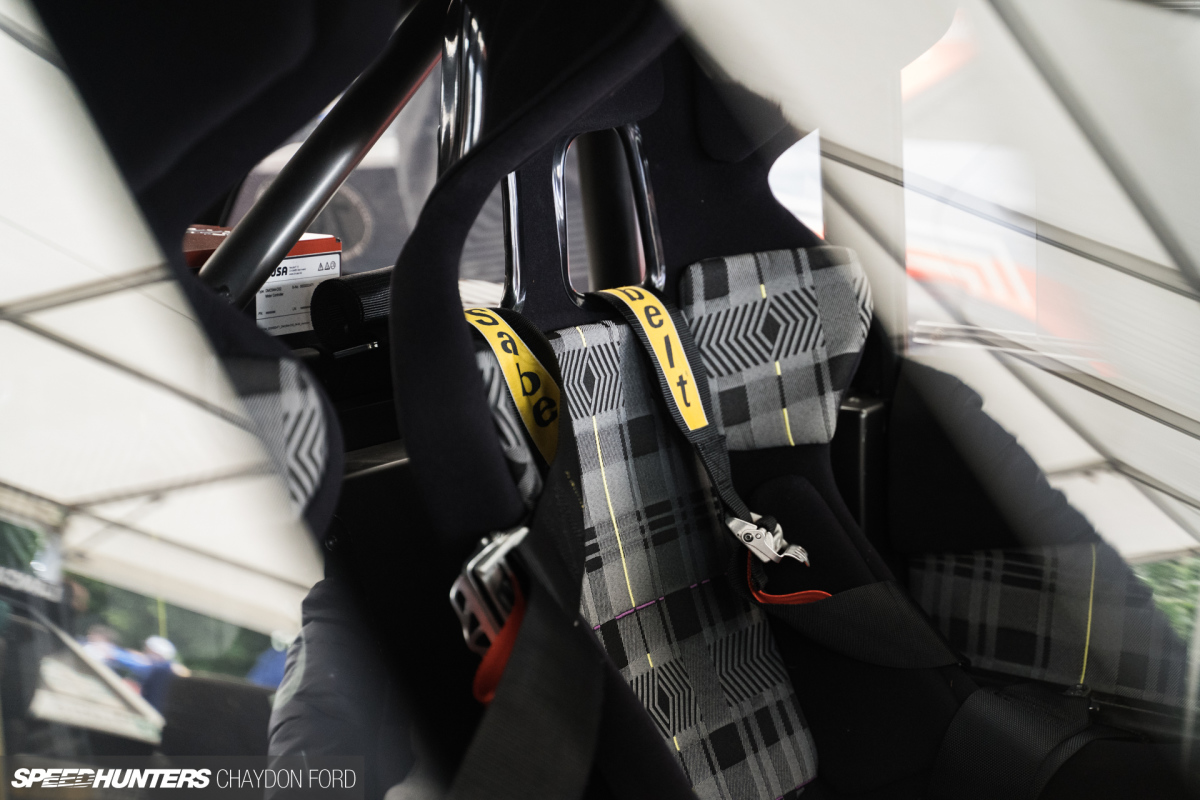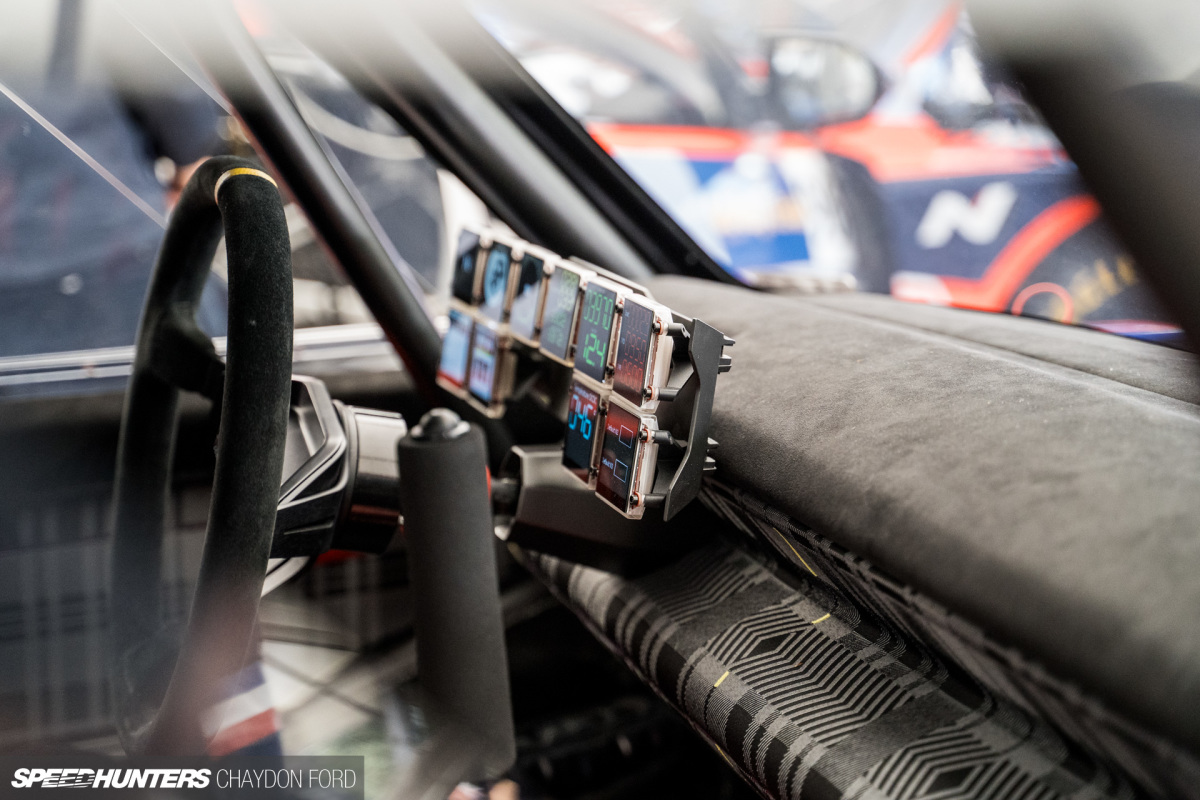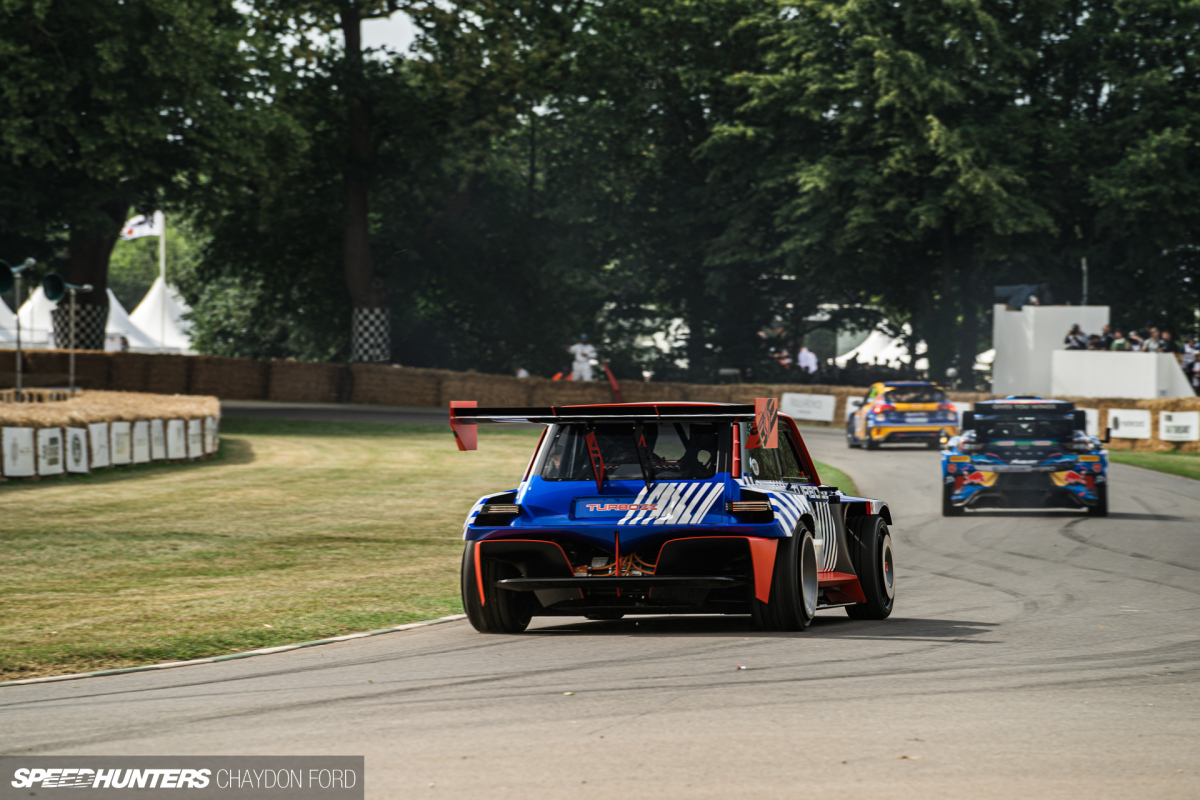The electric vehicle isn’t a new concept. They first appeared in the 1890s and were in direct competition with petrol and steam-powered variants for a number of years, but the technology was crude and realistically before its time. That time is now.
While many manufacturers have followed a fairly generic pathway with their new electric vehicles, not straying too far from modern designs in terms of styling, a few have looked to their past for inspiration. Renault (along with their sub-brand Alpine) and Hyundai are two automakers at the forefront, and their latest offerings were on show at the 2023 Goodwood Festival of Speed – a prime setting to display and demonstrate the next generation of EVs.
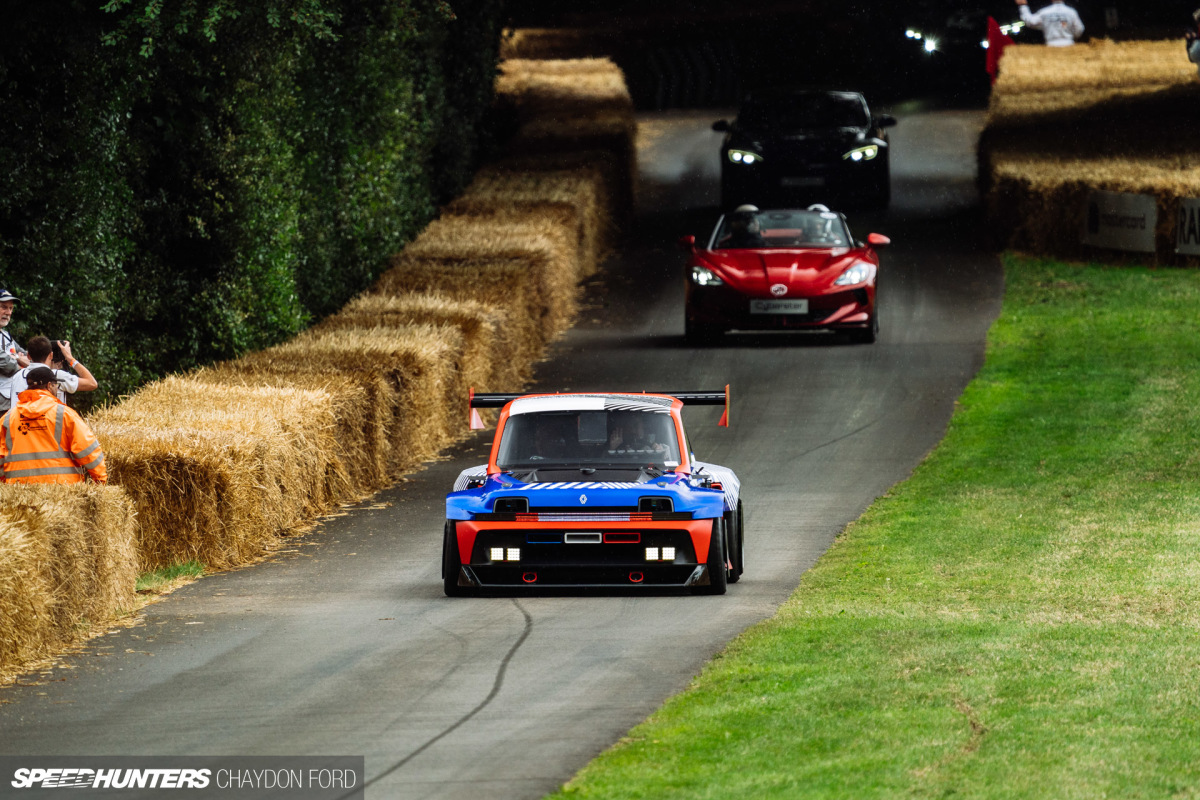
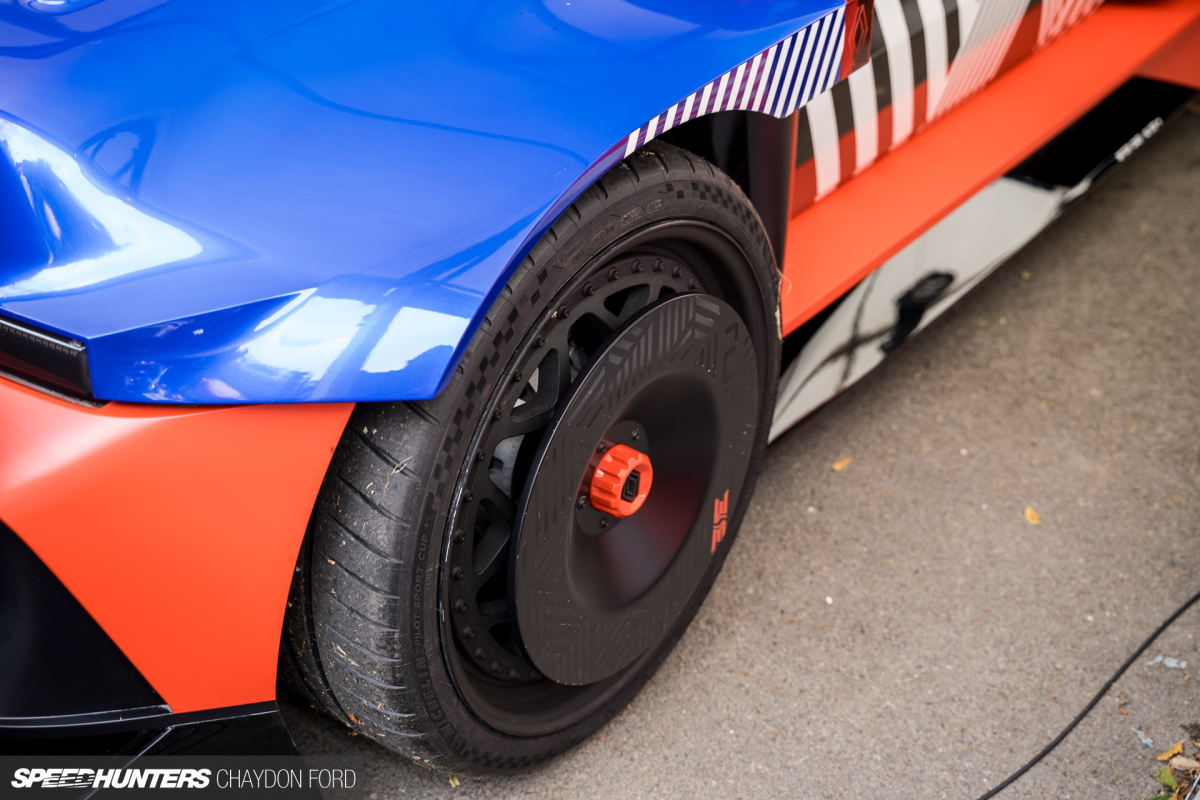
The Renault R5 Turbo 3E is incredibly imposing in the flesh. Numerous design features draw your eyes at first glance, with styling cues echoing that of the original R5 Turbo 2. The rather wide footprint for its relatively short wheelbase is something the original was known for, and the bulbous arches barely contain the wide wheels, which are fitted with aero discs.
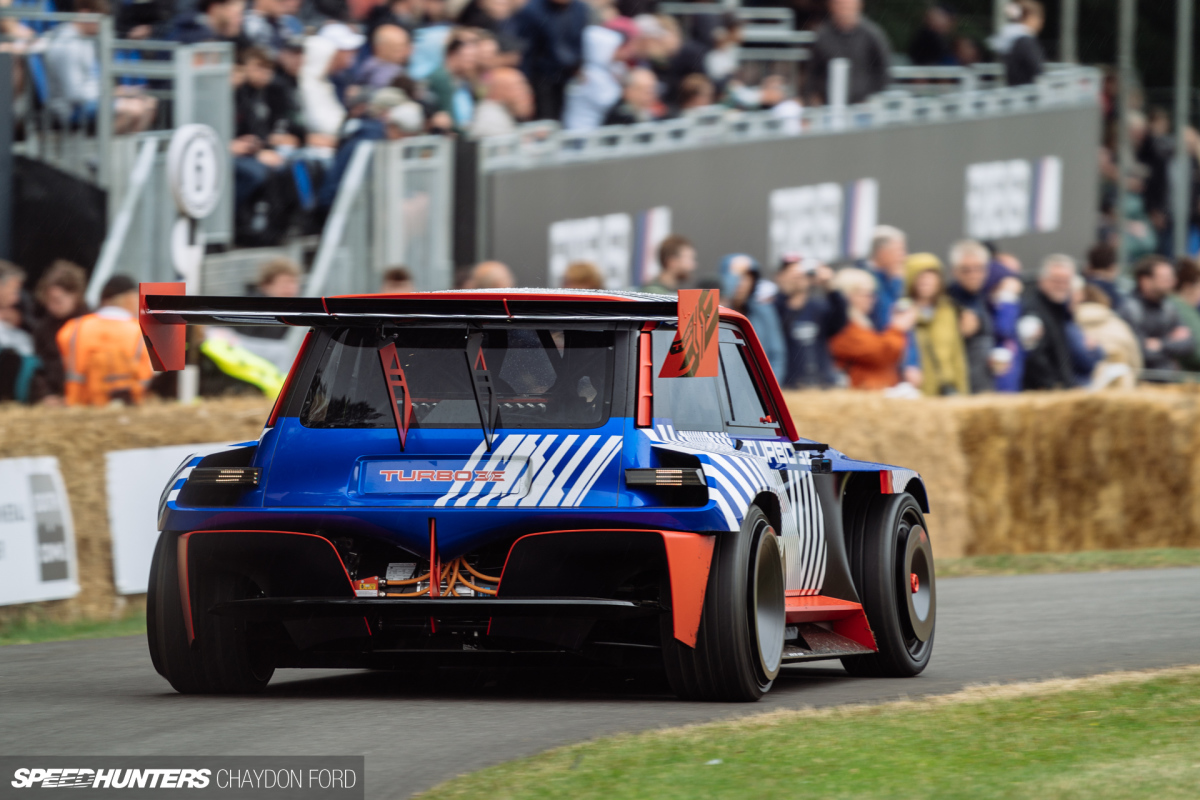
The rear wing has been borrowed from a Liger JS51 Sports Prototype race car, which when paired with the prominent front splitter and side skirts give the car a purposeful stance. I believe Renault has walked the line perfectly between paying homage to the original design and showcasing a design language which could feature in future models.
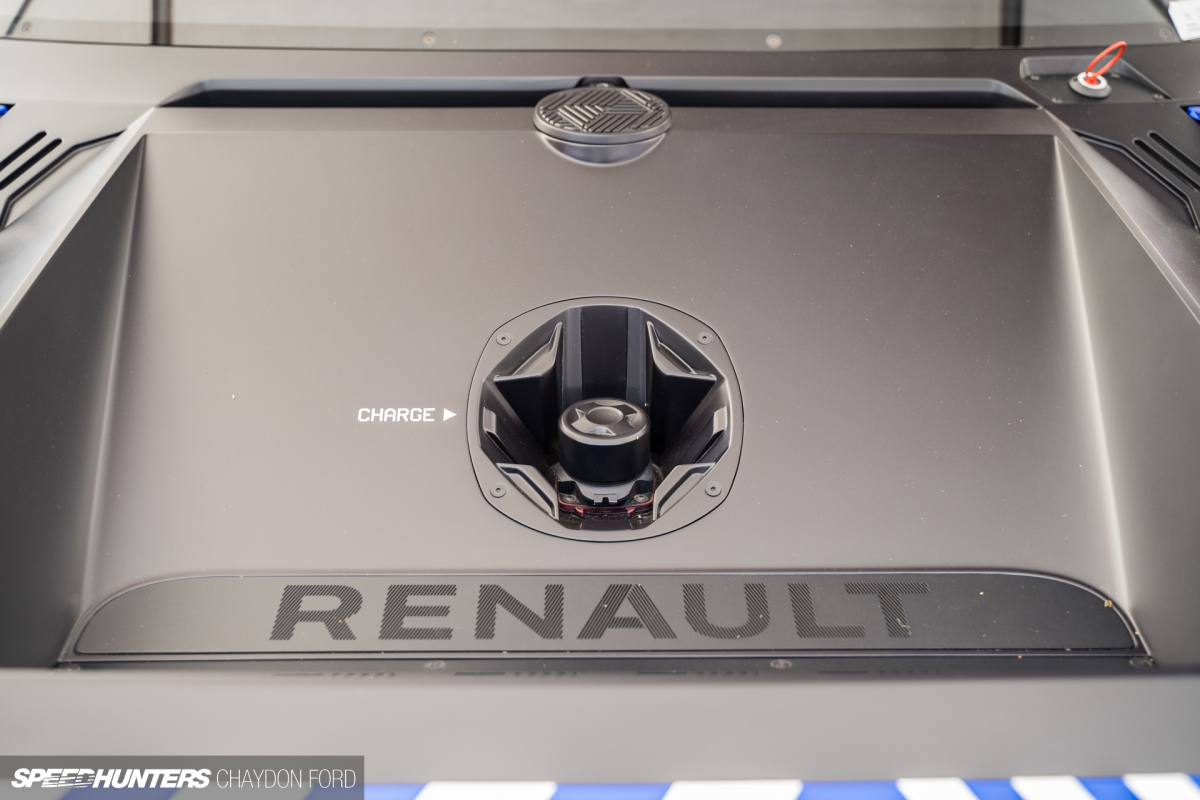
While there is still a distinct lack of theatre from the twin electric motors, the performance generated – amounting to 380hp and 516lb-ft – is hard to argue with.
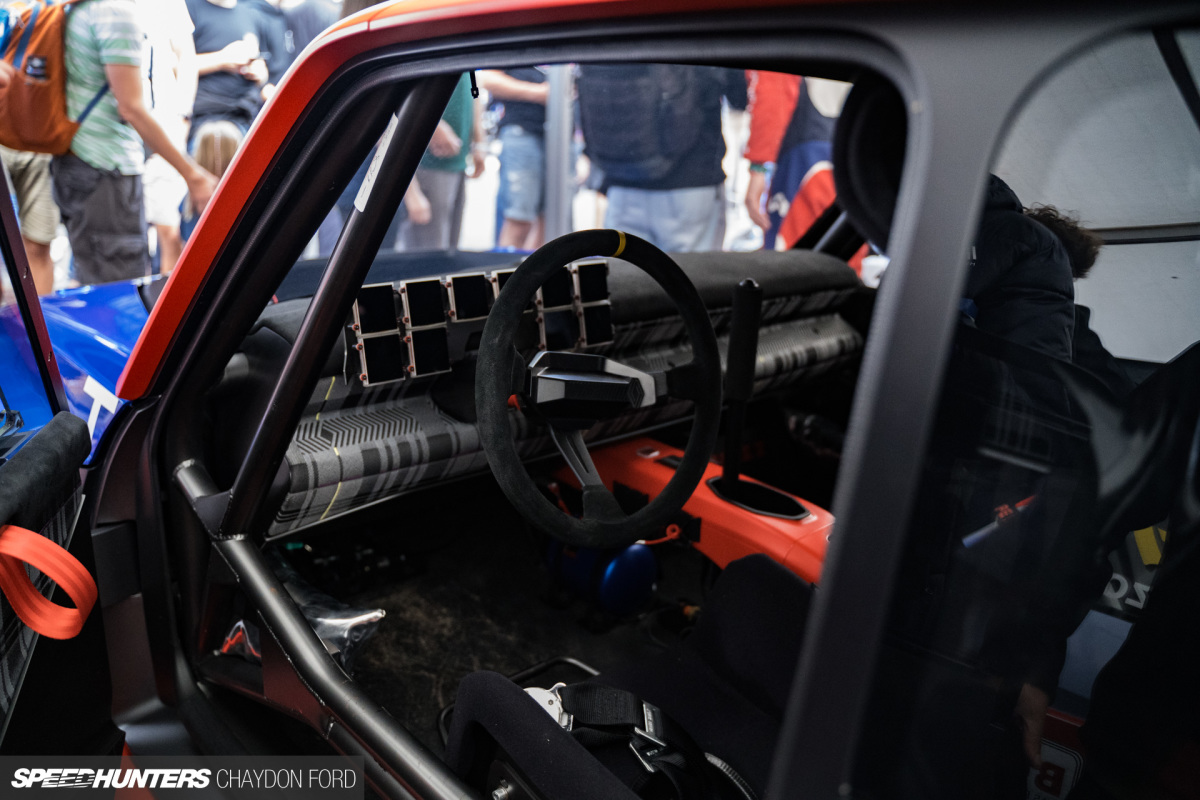
A hydraulic handbrake, prominently positioned in the interior, alludes to the primary directive of the car – fun. Instead of a large dash display, 10 small screens in front of the driver pay tribute to the dials in the original R5 Turbo 2.
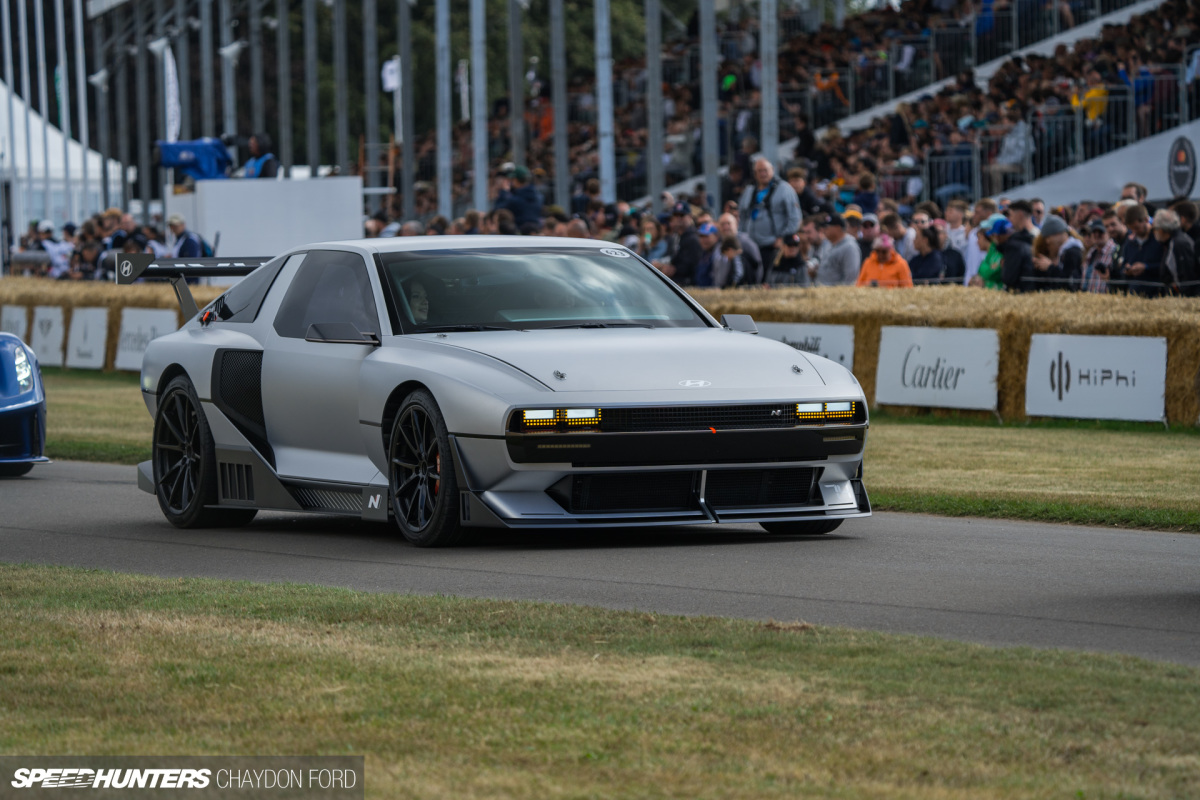
Hyundai is a brand that, just 10 years ago, most people associated with fairly bland cars. They’d do the job, but were about as exciting as plain porridge. Then something changed – the Korean automaker hired Albert Biermann. For those unaware, Biermann was the engineering chief of the BMW M division before his current vocation, so he knows a thing or two. The N division was created and Hyundai focused a huge amount of attention (and budget) to fun cars, culminating in this, the N Vision 74, a proof-of-concept which embodies Hyundai’s current design language.
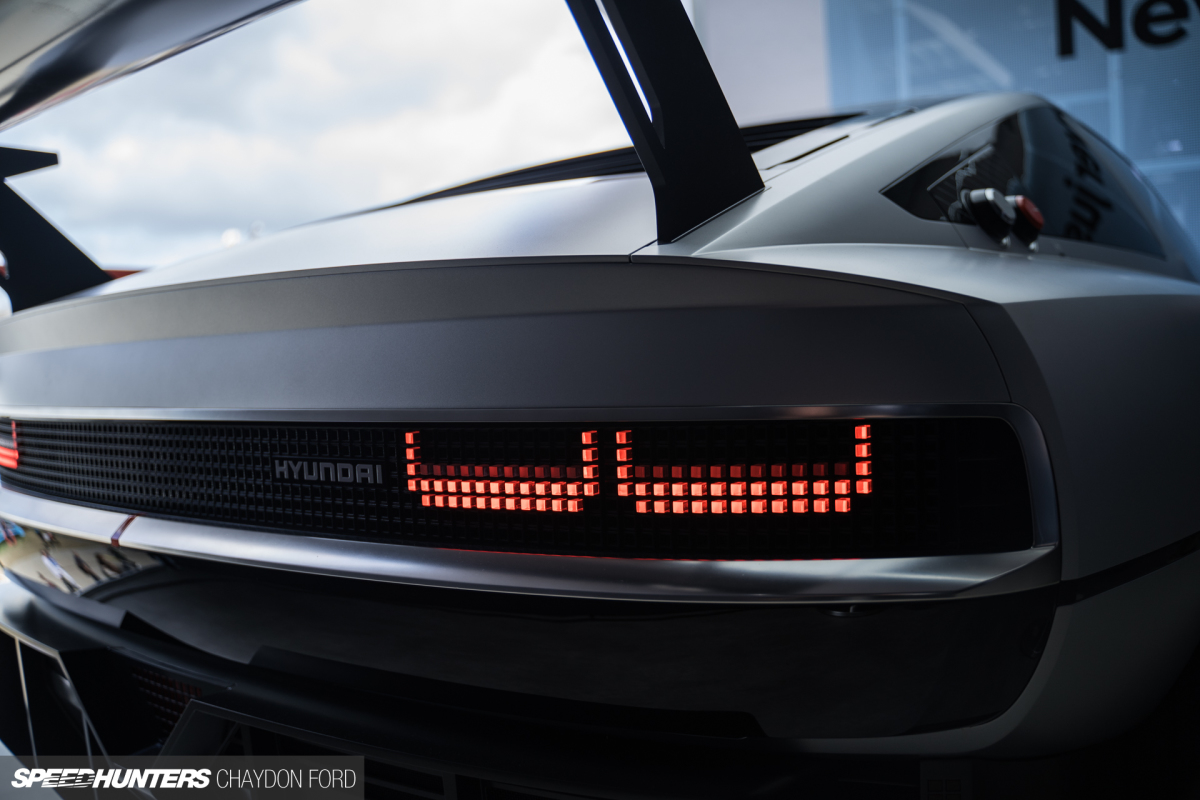
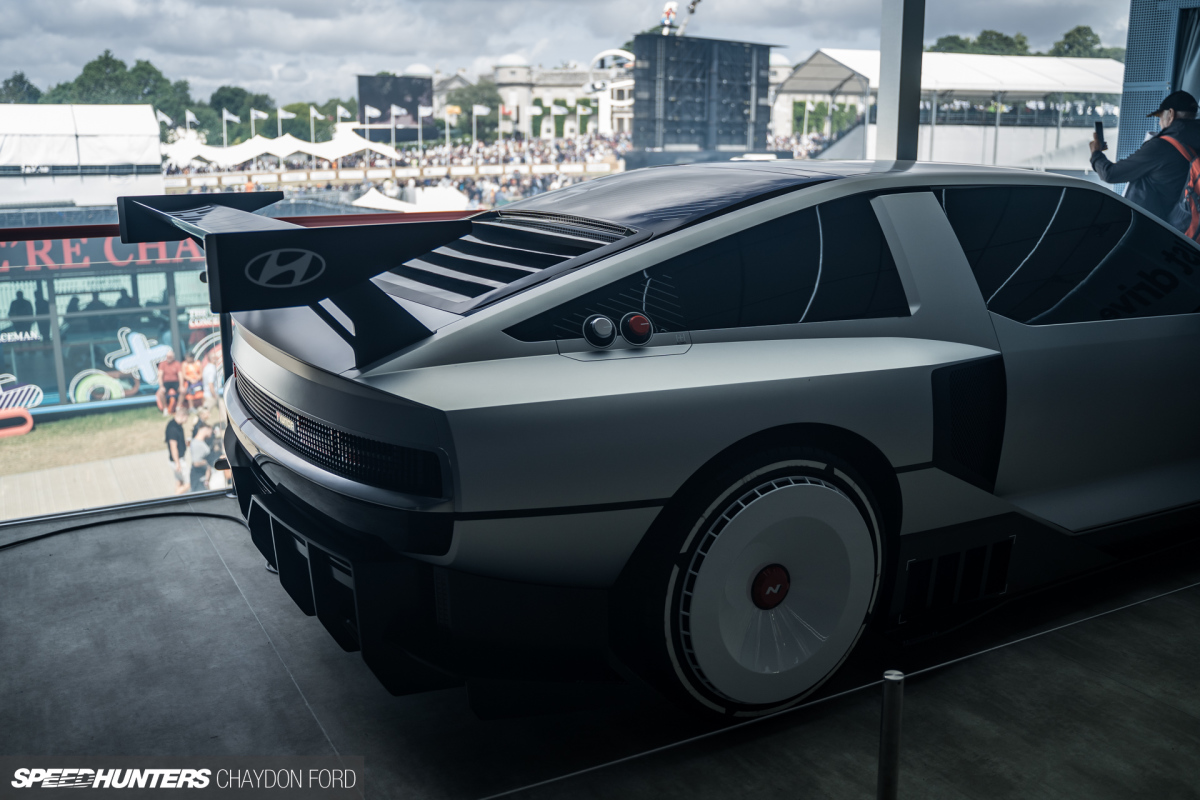
Drawing inspiration from the Hyundai Pony Coupe concept car displayed in 1974, the N Vision 74 would not look out of place in a retro synthwave music video. Flared box arches and body lines devoid of any major curves hint at the sporting intent of the car, and with 670hp and 664lb-ft feeding the rear wheels it has the performance to back it up. Compared to the Renault, the Hyundai uses a hydrogen fuel cell and batteries, developed in partnership with Rimac, to power the twin rear motors. This is another emerging technology, albeit not readily available yet.
Every day, advancements in battery and electric drivetrain technology are being made. With an electric drivetrain, you remove the packaging constraints that are usually associated with internal combustion engines, and in turn this allows for a higher degree of freedom in design, which can be seen in the two cars we’ve looked at here.
So I put the question to you: Have Renault and Hyundai done enough to make you want a 3E or N74? Whether we like it or not, EVs are here to stay, and while I don’t think they’ll fully replace combustion driven cars, it’s nice to have options.
Chaydon Ford
Instagram: chaycore
Credit : Source Post

